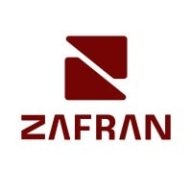


Tenable Security Center and Amazon Inspector compete in cybersecurity. Tenable holds an edge in pricing and user support, whereas Amazon Inspector is favored for advanced features and integration.
Features: Tenable Security Center includes comprehensive vulnerability assessment, real-time analytics capabilities, and threat prioritization aids. Amazon Inspector features automated security assessments, AWS service integration, and optimization for cloud-centric operations.
Room for Improvement: Tenable Security Center could enhance cloud integration, simplify deployment processes, and reduce setup costs. Amazon Inspector could improve personalized customer support, expand non-AWS integration options, and provide more detailed manual assessment tools.
Ease of Deployment and Customer Service: Tenable Security Center requires on-premises deployment with strong support services for smooth implementation. Amazon Inspector, designed for the cloud, offers easy AWS deployment but tends to lack the personalized customer service of Tenable.
Pricing and ROI: Tenable Security Center involves higher initial costs but offers long-term ROI through extensive insights. Amazon Inspector is cost-effective within AWS, providing significant ROI for cloud-native businesses.
| Product | Market Share (%) |
|---|---|
| Tenable Security Center | 3.5% |
| Zafran Security | 1.1% |
| Amazon Inspector | 2.4% |
| Other | 93.0% |



| Company Size | Count |
|---|---|
| Small Business | 3 |
| Midsize Enterprise | 2 |
| Large Enterprise | 5 |
| Company Size | Count |
|---|---|
| Small Business | 22 |
| Midsize Enterprise | 10 |
| Large Enterprise | 26 |
Zafran Security integrates with existing security tools to identify and mitigate vulnerabilities effectively, proving that most critical vulnerabilities are not exploitable, optimizing threat management.
Zafran Security introduces an innovative operating model for managing security threats and vulnerabilities. By leveraging the threat exposure management platform, it pinpoints and prioritizes exploitable vulnerabilities, reducing risk through immediate remediation. This platform enhances your hybrid cloud security by normalizing vulnerability signals and integrating specific IT context data, such as CVE runtime presence and internet asset reachability, into its analysis. No longer reliant on patch windows, Zafran Security allows you to manage risks actively.
What are the key features of Zafran Security?
What benefits can users expect from Zafran Security?
In industries where security is paramount, such as finance and healthcare, Zafran Security provides invaluable protection by ensuring that only exploitable vulnerabilities are addressed. It allows entities to maintain robust security measures while allocating resources efficiently, fitting seamlessly into existing security strategies.
Amazon Inspector is an automated security assessment service that helps improve the security and compliance of applications deployed on AWS. Amazon Inspector automatically assesses applications for exposure, vulnerabilities, and deviations from best practices. After performing an assessment, Amazon Inspector produces a detailed list of security findings prioritized by level of severity. These findings can be reviewed directly or as part of detailed assessment reports which are available via the Amazon Inspector console or API.
Amazon Inspector security assessments help you check for unintended network accessibility of your Amazon EC2 instances and for vulnerabilities on those EC2 instances. Amazon Inspector assessments are offered to you as pre-defined rules packages mapped to common security best practices and vulnerability definitions. Examples of built-in rules include checking for access to your EC2 instances from the internet, remote root login being enabled, or vulnerable software versions installed. These rules are regularly updated by AWS security researchers.
Get a risk-based view of your IT, security and compliance posture so you can quickly identify, investigate and prioritize your most critical assets and vulnerabilities.
Managed on-premises and powered by Nessus technology, the Tenable Security Center (formerly Tenable.sc) suite of products provides the industry’s most comprehensive vulnerability coverage with real-time continuous assessment of your network. It’s your complete end-to-end vulnerability management solution.
We monitor all Vulnerability Management reviews to prevent fraudulent reviews and keep review quality high. We do not post reviews by company employees or direct competitors. We validate each review for authenticity via cross-reference with LinkedIn, and personal follow-up with the reviewer when necessary.